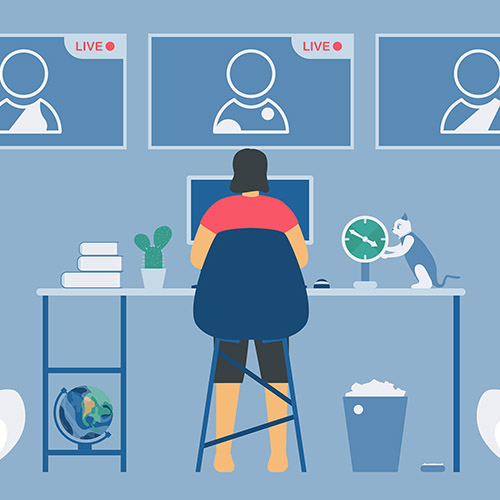Successful projects require clear goals and a committed team. With jam-packed schedules and diverse sets of responsibilities it can be tough to get a team of people focused on the important initiative you are leading. This is why workshop sessions have become an effective tool in the world of digital design and user experience. Workshops are a great way to gather info, generate ideas, and build consensus around project direction. Getting a group of people in the same room builds trust and can be a great way to kickoff new endeavors. But the legwork and logistics that actually create an effective workshop are easy to miss. Good preparation ensures design workshops run smoothly and deliver the intended value. With that in mind, here are five simple things to remember when planning a workshop.
1. Create AND Communicate Your Agenda
A good agenda is grounded in the goals of the workshop and available to all participants before the session. This agenda should give people who will be attending a clear preview of what will be covered, helping them arrive prepared to contribute. This is also a great opportunity to set expectations and declare a “no screens allowed” timeframe. Highlighted breaks in the schedule will allow participants to check email during the allotted times and be fully focused on the workshop otherwise.
In addition to the public agenda, the workshop facilitator should have a more detailed agenda of their own with time estimates, responsibilities for each member of the team running the session, and “nice-to-have” activities that can be included or skipped depending on time and overall progress. Facilitating a workshop often involves a bit of improvisation, adapting the agenda or activities to better fit the dynamics of a particular group. Documenting this extra level of detail beforehand enables greater flexibility during the workshop to adjust as needed and still achieve stated goals.
2. Know Your Participants
If you are in charge of inviting participants make sure to select people from teams across different disciplines and from multiple levels within the company. This cross pollination of perspectives is where the most innovative ideas will come from. If you aren’t responsible for all the session invites, make sure to know the names and roles of all participants ahead of time (both who was invited and how many are actually attending). A good workshop will empower delivery teams to think at a higher level and encourage leadership to get their hands dirty finding practical solutions. It is important to ensure there are diverse opinions represented, but also to understand a bit about the background of the folks in the room. Being able to capture both the discussion points and their point of origin will help clarify the motivations and needs of different groups during the session.
3. Know the Details of the Physical Space
The space in which a workshop is held can significantly help or hurt the effectiveness of the workshop. If possible, book a space that has ample room for all attendees but keeps folks in an intimate setting with clear views of any slides or whiteboards. If you’re not in charge of picking the space and it’s not feasible to visit beforehand, request a photo of the room. This will allow you to plan seating, wall workspace, and where small groups can work together if the larger group needs to be split up during some activities. Most importantly, ensure the space is booked for 30 minutes before the session’s start time and for an hour afterward. Use the time before for general setup and technology checks. Set up your laptop to share slides with the room and ensure that any conferencing services are functioning before everyone arrives. After the session, use the time to document learnings, collect created materials, and complete general clean up, leaving the room as you found it.
4. Plan for Unique Participation Constraints
You request and hope for everyone’s full attention during the workshop, but an experienced facilitator knows how to adapt when participation constraints arise. This can be as simple as visually documenting the session so folks who absolutely have to come late, or need to excuse themselves for a portion of the session, can be adequately kept in the loop. Planning for remote participants may also be necessary. Be ready to share slides on a display in the session room and via a virtual conference line like Webex or Zoom. Think of ways a remote participant can share their ideas in sketching sessions or in small-group discussions with collaboration tools like Mural. It’s important to accomplish the goals of the workshop, but also to do it in a manner in which everyone has equal opportunity to have their voices heard.
5. Organize Your Supplies
Finally, make sure to prepare all necessary supplies beforehand. Workshops are most effective when people are up, moving, and engaged. That often means lots of sketching, show-and-tell, and debate. Make sure plenty of sticky notes, Sharpies, whiteboard markers, poster paper, dot stickers, and other supplies are organized and available for use. These supplies help ensure that folks can show their ideas, not just talk about them. This is particularly important for keeping everyone on the same page. Having the right supplies also helps leave a documentation trail that can be revisited after the workshop for planning next steps and additional follow-up activities.
While these considerations for workshop planning won’t guarantee a successful session, having the nitty-gritty details ironed out beforehand creates an opportunity for the most value. By carving out a space for cross discipline collaboration, teams can uncover new ideas, and refine them in a way that will help align the team moving forward. Done right, a well-planned workshop will build energy and momentum around a new product or design idea and give a diverse team a common starting point from which to build for the future.




